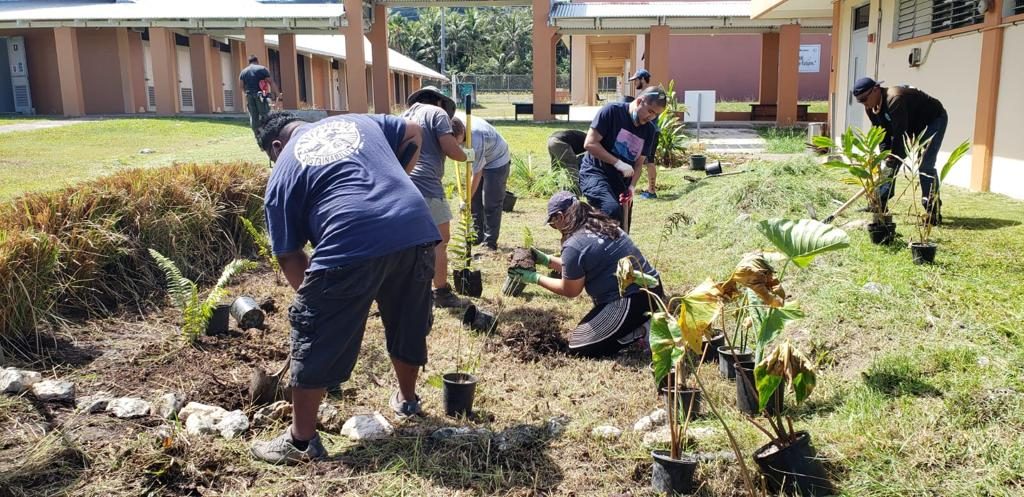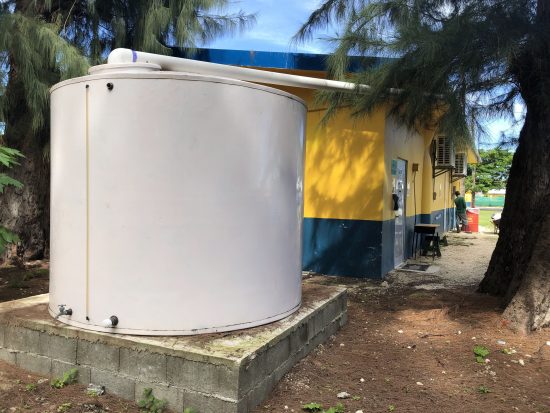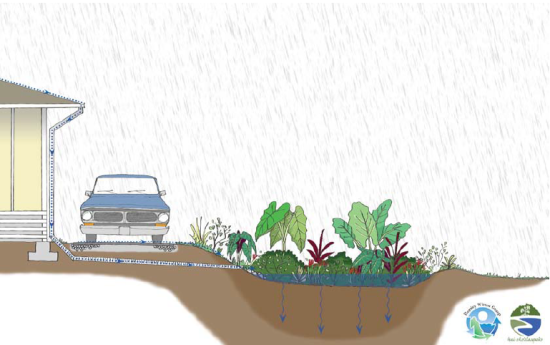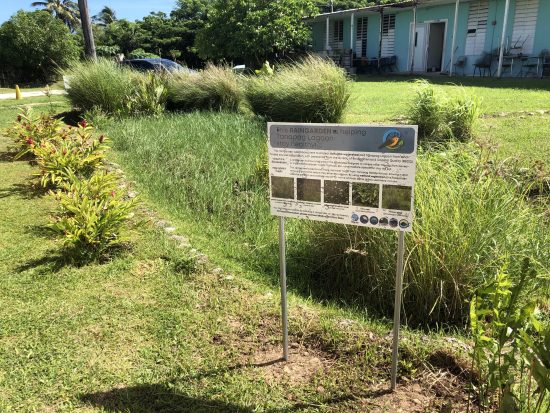Best Management Practices

Just as a watershed collects and carries water on a large-scale, each rooftop, parking lot, and home is itself a smaller drainage basin collecting and discharging water. All landscapes, human and natural, contribute towards the water (and pollutants) which flow through our islands’ watersheds and into the Pacific Ocean. Best management practices (BMPs) are simple, economical practices that help reduce the quantify, and improve the quality, of stormwater runoff from an area.
While city planners and natural resource managers work on the largescale to address issues of land-based sources of pollution (LBSP) in the CNMI, small projects at your home or business can contribute to the reduction of overall surface water runoff and pollutant loads in our watersheds — and maybe even improve your homes resiliency! Please contact DCRM if you would like further information or assistance designing BMPs at you home.
Read below to learn more about strategies for enhancing your personal watershed.
Rain Water Catchment
Thousands of gallons of clean rainwater run off your roof every year! Your rooftops is like watershed, collecting rainfall and transporting it towards drainage points. You can estimate potential water “capture” (in gallons) by multiplying your rooftop area by the average rainfall (~70 inches); to get this in gallons, divide by the cubic inches per gallon (231 cubic inches)
( rooftop surface area [in²] x 70 [in] ) / 231 [in³/gal]
Rain barrels are a cheap and easily assembled alternative to larger storage tanks, and can be assembled with materials sourced from your local hardware store. Rainwater collected may be used for a variety of purposes, such as watering plants, providing water for livestock, or household cleaning. These can increase your household’s disaster resilience by adding additional sources of water in case utilities are compromised by storms or other events.

Larger rainwater collection may be achieved with gutters and storage tanks. Installation will require careful planning and more investment in equipment, and is best suited for structures with slanted roofs. Gutters should be installed securely, as per manufacturer guidance, and storage tanks should be placed on solid, even surfaces. When installed, gutters and storage tanks have the potential to capture a surprising volume of water from rooftops — just ten square feet of surface area receives over 4,000 gallons of water over an average year in the CNMI!

Rainwater carries pollutants across the land and into our ocean. By capturing rainwater before it enters the watershed, you can help reduce pollution in our oceans.
Raingardens

A raingarden is a low-lying area in the landscape designed to collect water flowing from paved or impermeable spaces (roads, rooftops, etc.) and mediate absorption into the soil. By using wetland vegetation, a raingarden absorbs pollution while also creating habitat for native animals, and aesthetically pleasing landscaping.
Click the links below to learn more about raingardens and how you can install one at your home or business, or contact DCRM at watersheds@dcrm.gov.mp for assistance.

